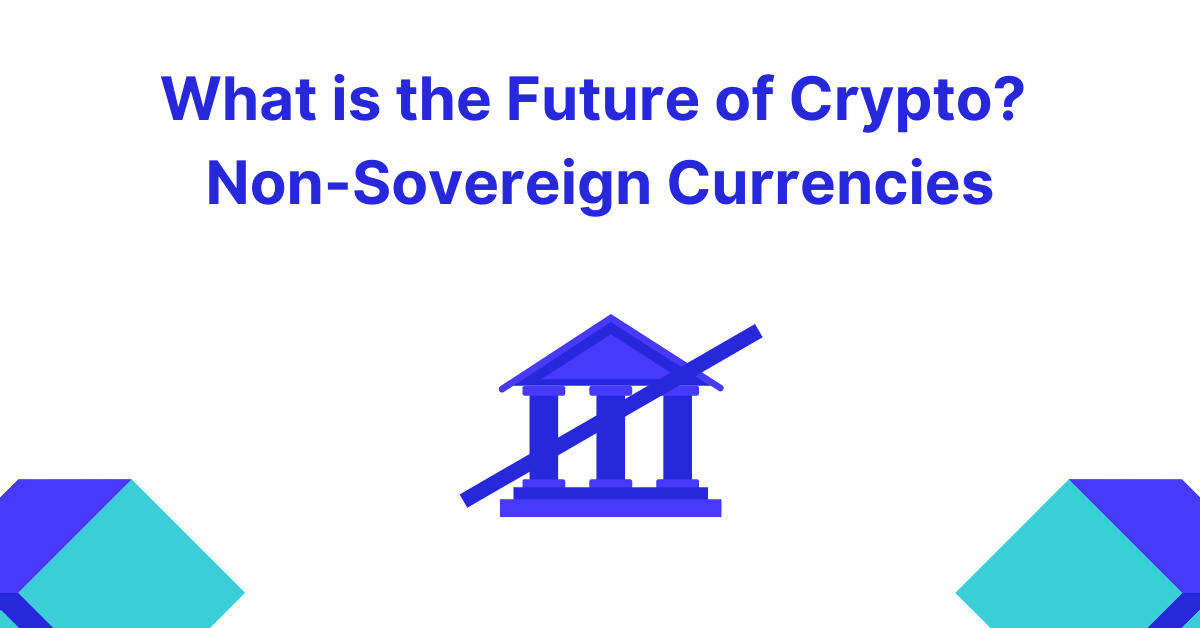Wholesale CBDCs
CBDCs and DLT are getting hotter by the day. Perhaps it’s due to Money2020 having just finished, but when I jumped onto Twitter at the weekend, CDBCs were trending. On one side of the fence, you have central bankers and the TradFi community singing their praises and on the other, you have some of the web3 community raising their concerns with visuals such as the below.
It seems not everyone is a fan
Nice awareness campaign against CBDC. Share it with your non-finance friends! 1/3 pic.twitter.com/16Dh4KHMze
— Philipp (🌿,🌿) (@PhilippInvest) October 23, 2022
I can see where both camps are coming from, but I do believe there’s an inevitability to CBDCs, especially in the wholesale financial markets. The retail market is less clear, but this is where much of the concerns from privacy advocates are coming from.
But before we go any further, let's cover some basics.
What are wholesale CBDCs and how do they work?
Central Bank Digital Currencies (CBDCs) are digital representations of a nation's fiat currency issued and regulated by the central bank. Wholesale CBDCs are therefore a type of CBDC. They are primarily designed for use by financial institutions and government entities in large-scale financial transactions and settlements. They are also sometimes also referred to as Wholesale CBCCs (Central Bank Crypto Currencies).
Wholesale CBDCs operate on blockchain technology, similar to many cryptocurrencies. However, they are typically permissioned blockchains, meaning that only authorized participants can join and transact on the network. This distinguishes them from public cryptocurrencies like Bitcoin, which are open for anyone to participate.
Here's a simplified overview of how they operate:
- Authorization: Financial institutions and government entities receive authorization from the central bank to participate in the Wholesale CBDC network.
- Digital Wallets: These authorized entities create digital wallets within the CBDC network, which are used to hold and transact in digital currency.
- Transactions: Wholesale CBDCs are primarily used for large-value transactions between financial institutions. These transactions can include interbank settlements, securities trading, and cross-border payments.
- Central Bank Oversight: The central bank maintains oversight and control of the CBDC network, ensuring the integrity and security of transactions. It also regulates the issuance and redemption of Wholesale CBDCs.
Use cases
In the context of the wholesale financial markets, which are tightly regulated and controlled by central banks, CBDCs provide an opportunity to improve settlement times between entities and reduce the operational cost of participating in these networks. A DLT or blockchain provides a network that participants can join, where a digital version of the currency exists, and smart contracts can be used to manage and automate activities between participants. Privacy between participants on these networks is of lesser concern than ensuring access to the network is tightly controlled and restricted to those regulated entities.
In this respect, embracing blockchain technology in CBDCs can be considered a technology upgrade (a major one at that), rather than a complete change in how wholesale markets use currencies. Again, to re-emphasise, this is because of these networks’ tightly regulated nature, and the underlying technology they require is a private-permissioned blockchain network.
Things become more complex when we have to start dealing with cross-border payments for FX (payment versus payment) and securities settlement (delivery versus payment), as all of a sudden the asset exchange that needs to take place is beyond the remit of a single central bank’s jurisdiction.
For instance, if you need to exchange sterling for dollars in the context of wholesale CBDCs, you have a transaction that spans two different CBDC networks — one regulated by the Bank of England, the other by the Federal Reserve (these don’t exist yet, but likely will in some shape or form). Exactly what approach is used to manage such cross-chain transactions remains to be seen, but we know the participants in these networks will be large financial institutions or payment providers in the regulated markets.
It’s worth mentioning that the exact form taken by CBDC networks is likely varied. In the UK for instance, Fnality is operating for all intents and purposes a synthetic CBDC. They are providing a Bank of England-regulated, wholesale payment infrastructure that uses blockchain technology. As it’s not managed by the Bank of England (although it is regulated by it) it’s not a classic wholesale CBDC.
In addition, there are other wholesale payment rails that are still available beyond their platform.
Returning back to privacy concerns, a wholesale CBDC network exists behind closed doors — the central bank and commercial banks. It is effectively a new payment rail that exists between those participants. Hence from the consumer perspective, it is no different to what exists currently with respect to their privacy.
The role of central banks is to ensure financial and economic stability. The responsibility to monitor the financial activities of companies and individuals lies with regulated financial institutions via KYC and AML legislation. Whether or not a wholesale CBDC exists does not change this, which is why consumers and privacy advocates should not be concerned with activities here. Arguments against retail CBDCs are more logical. However, here too I believe such concerns are unjust. This is something I will be covering in-depth next week.

